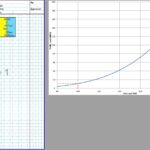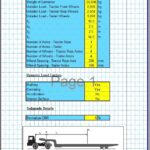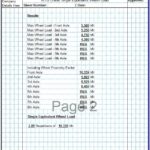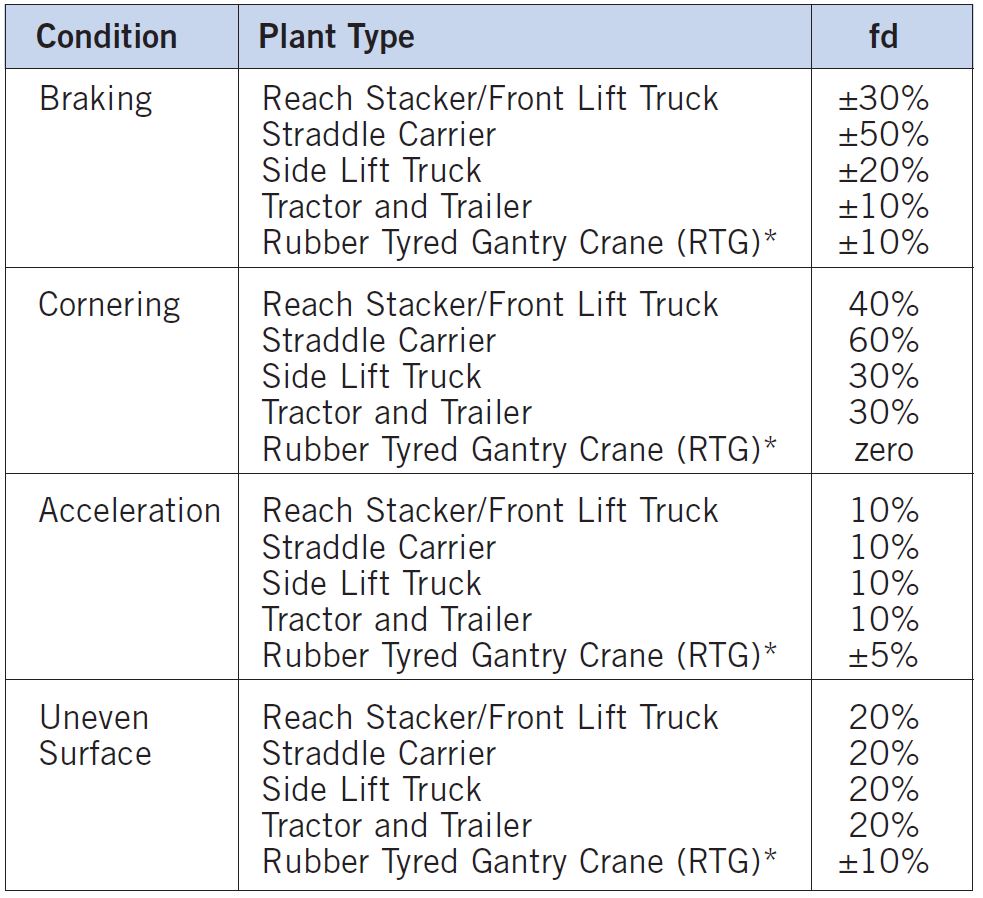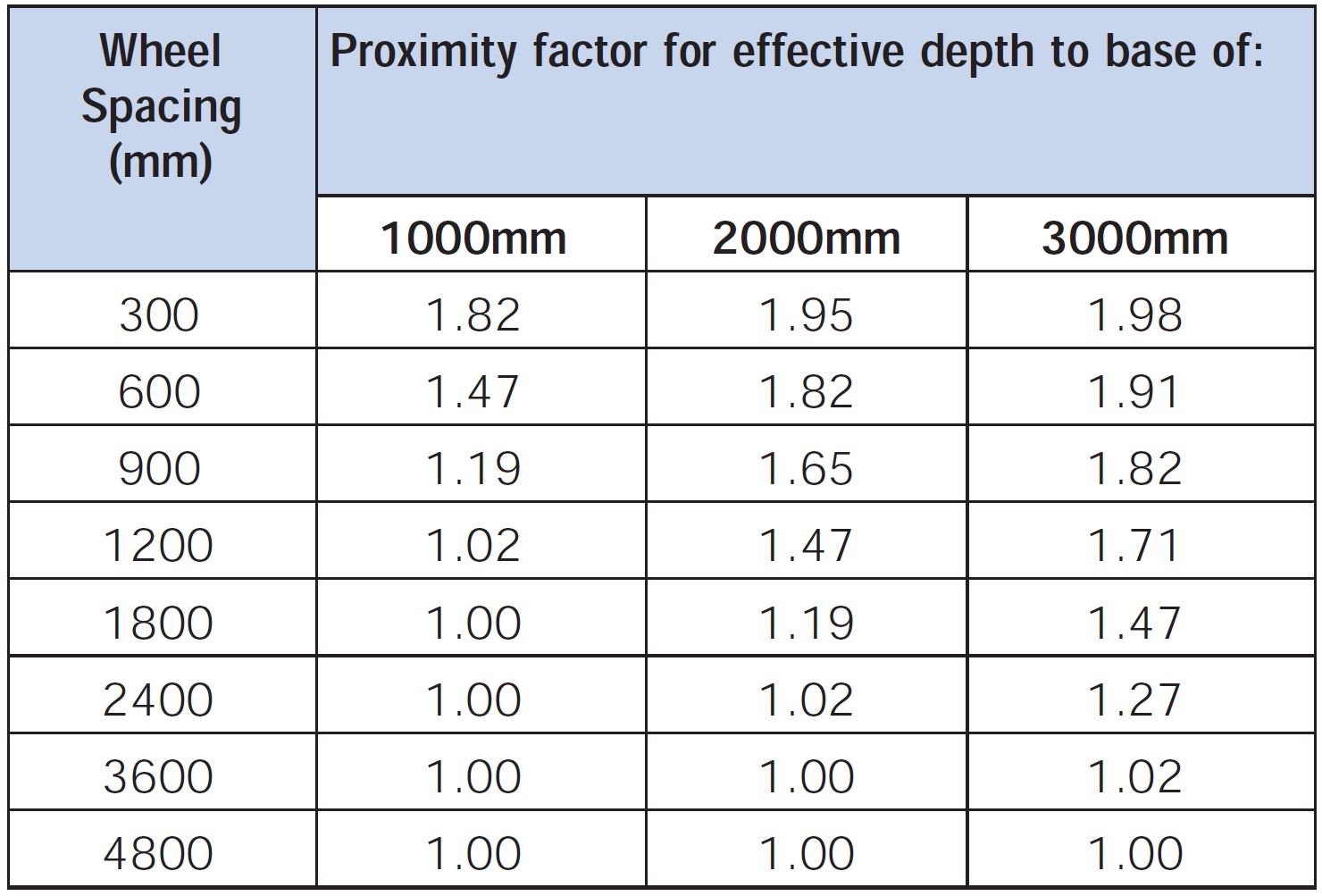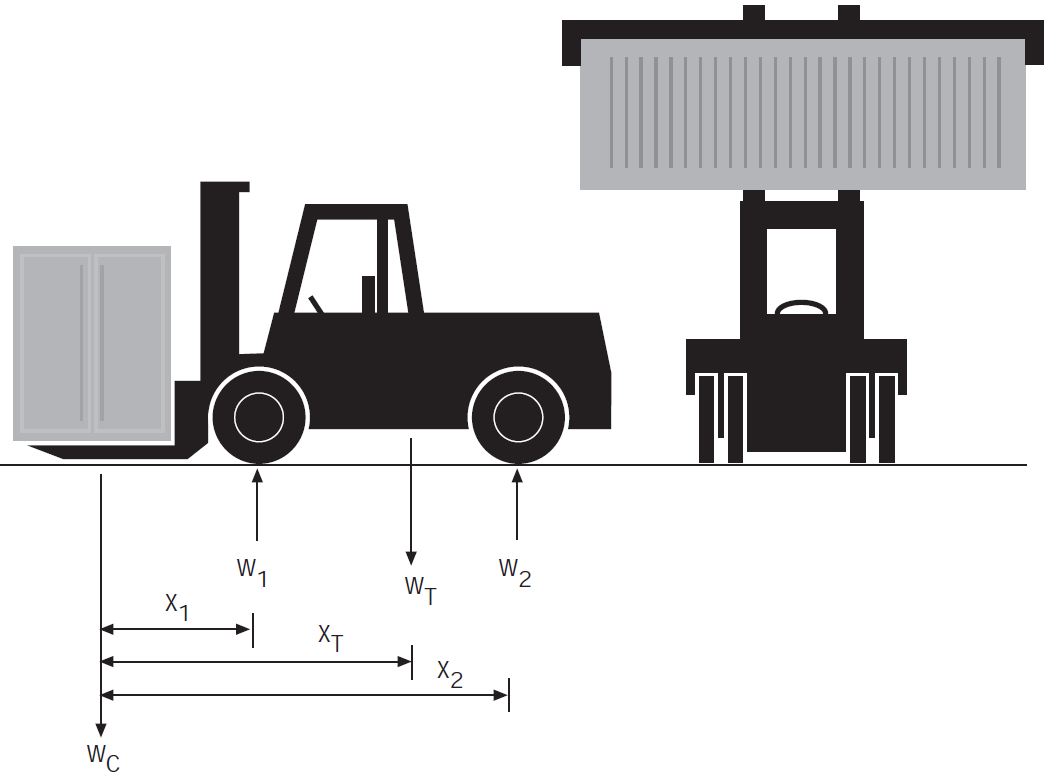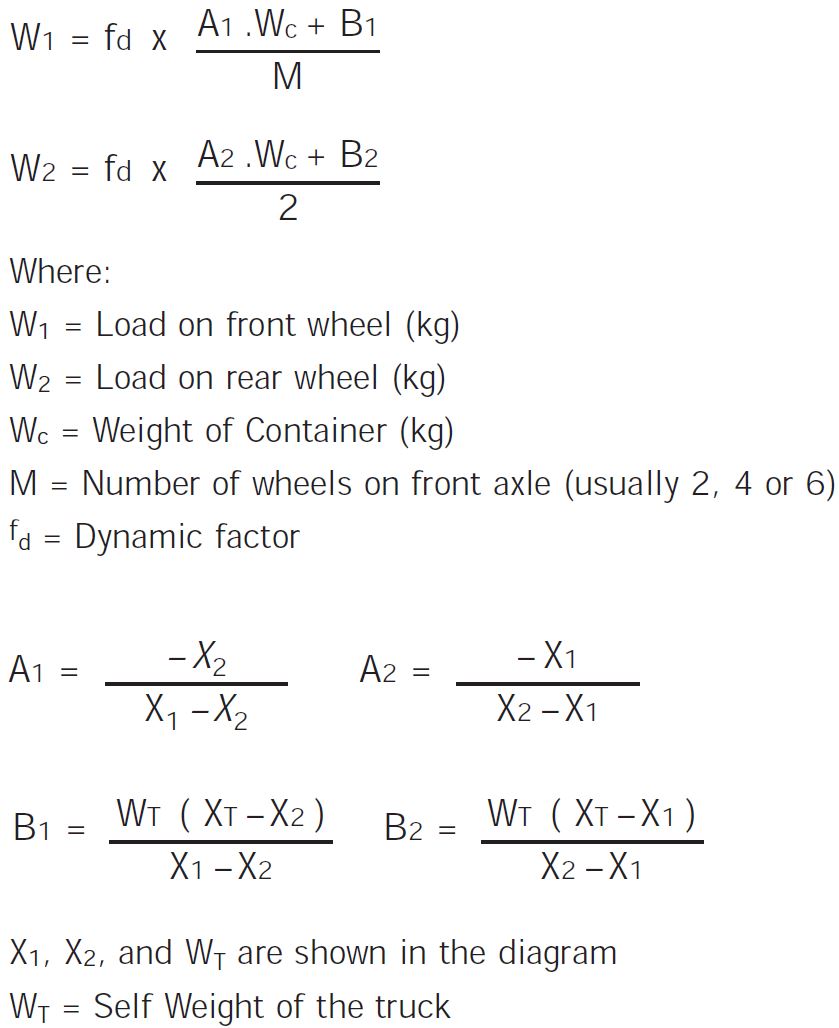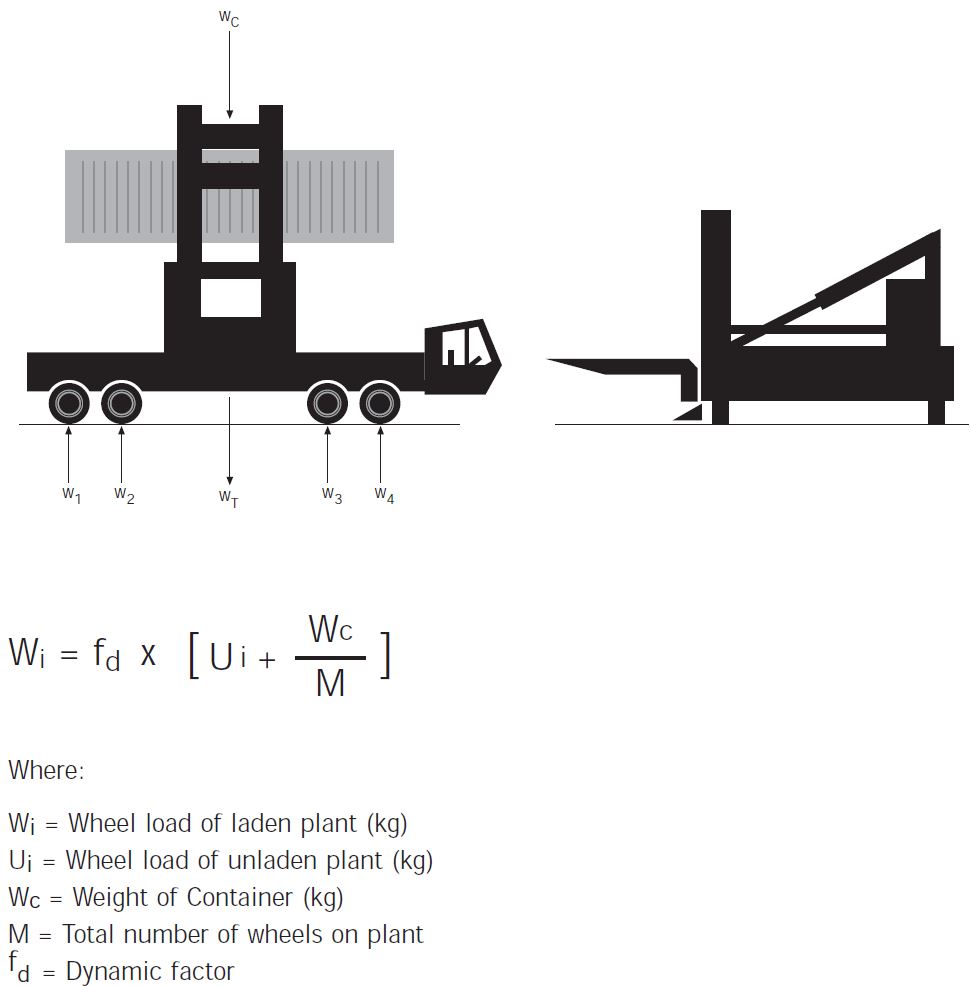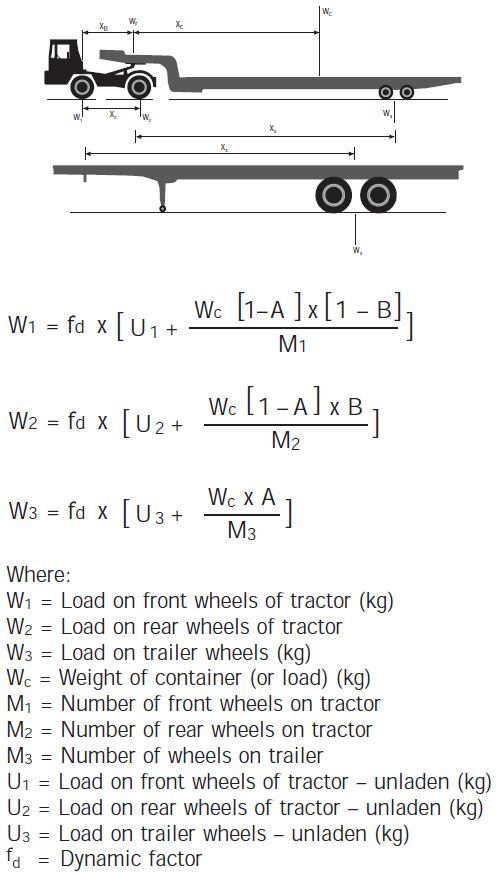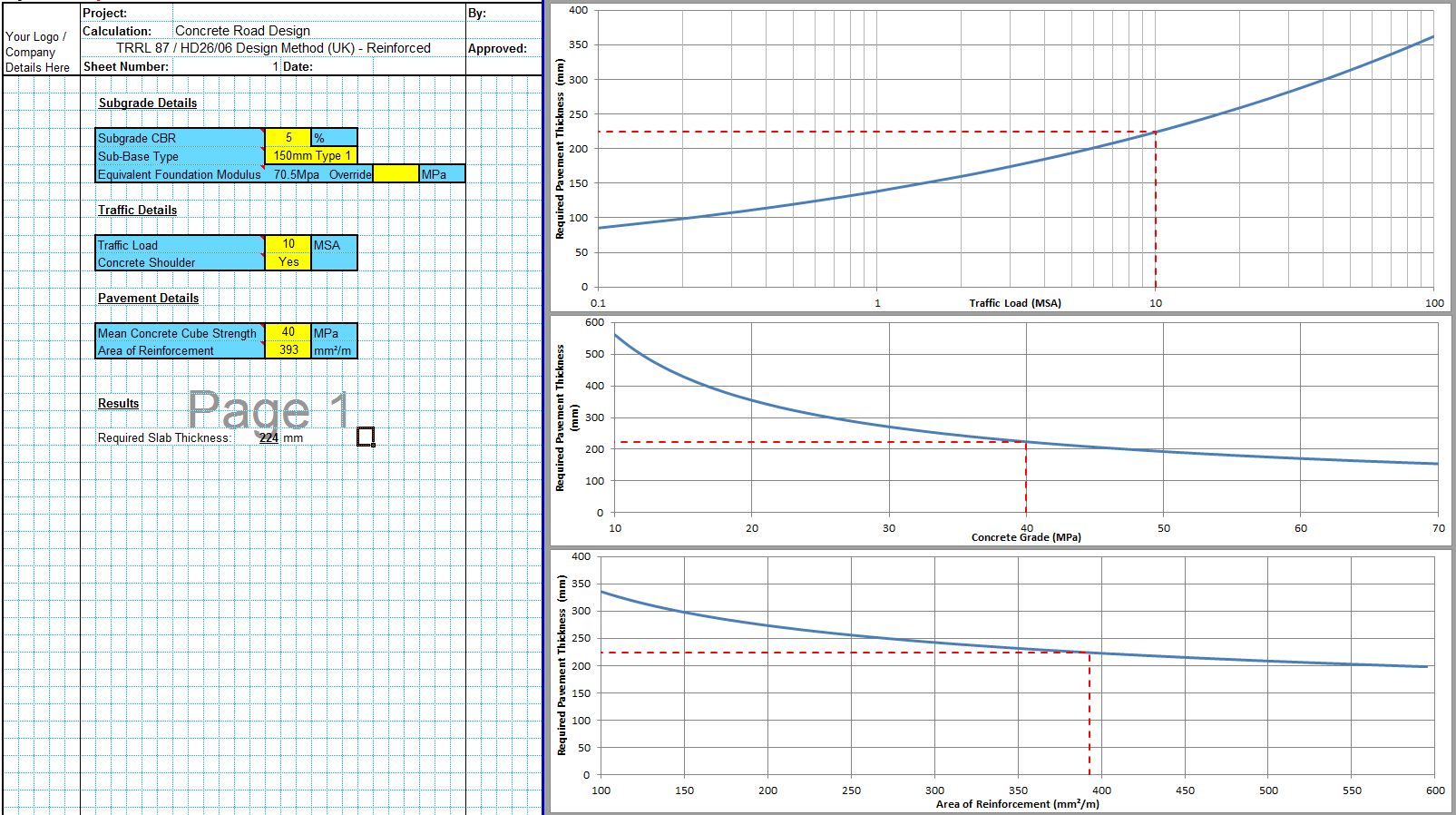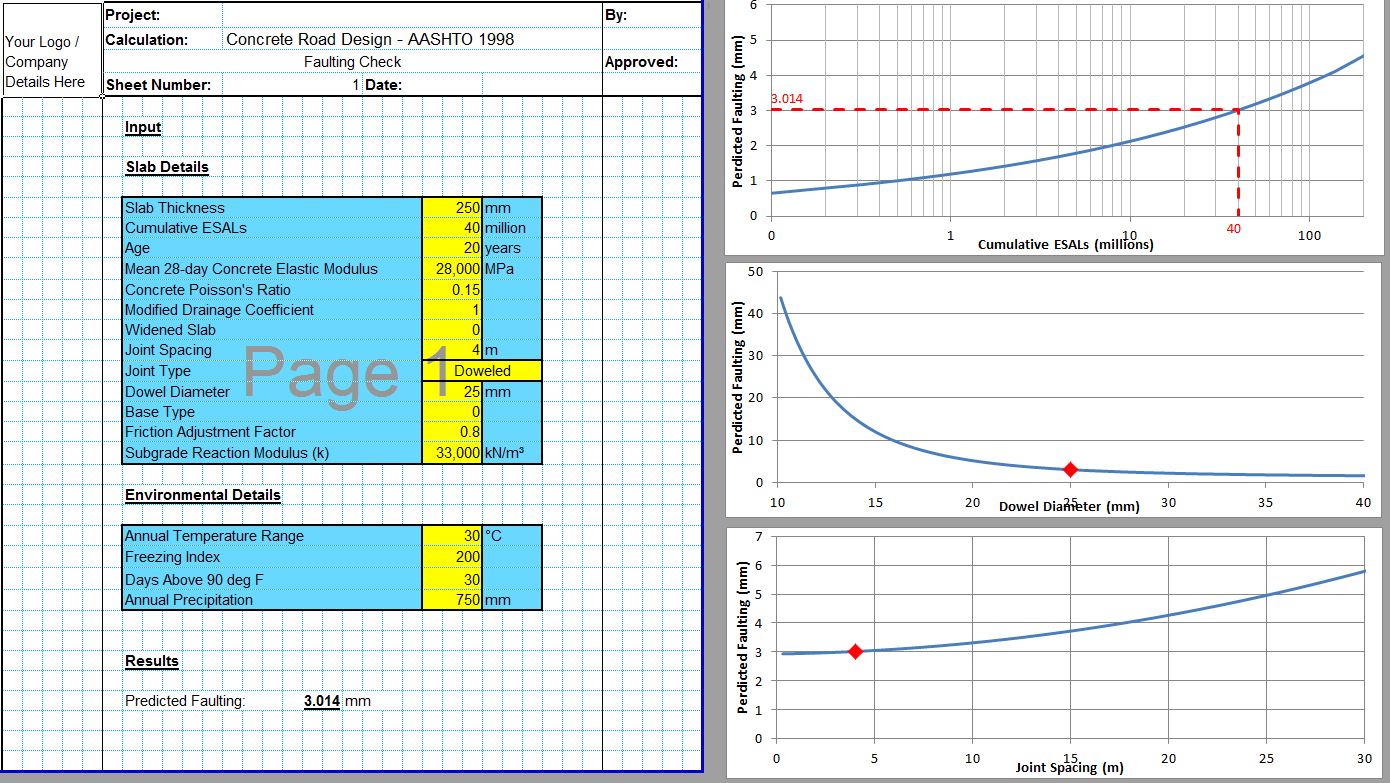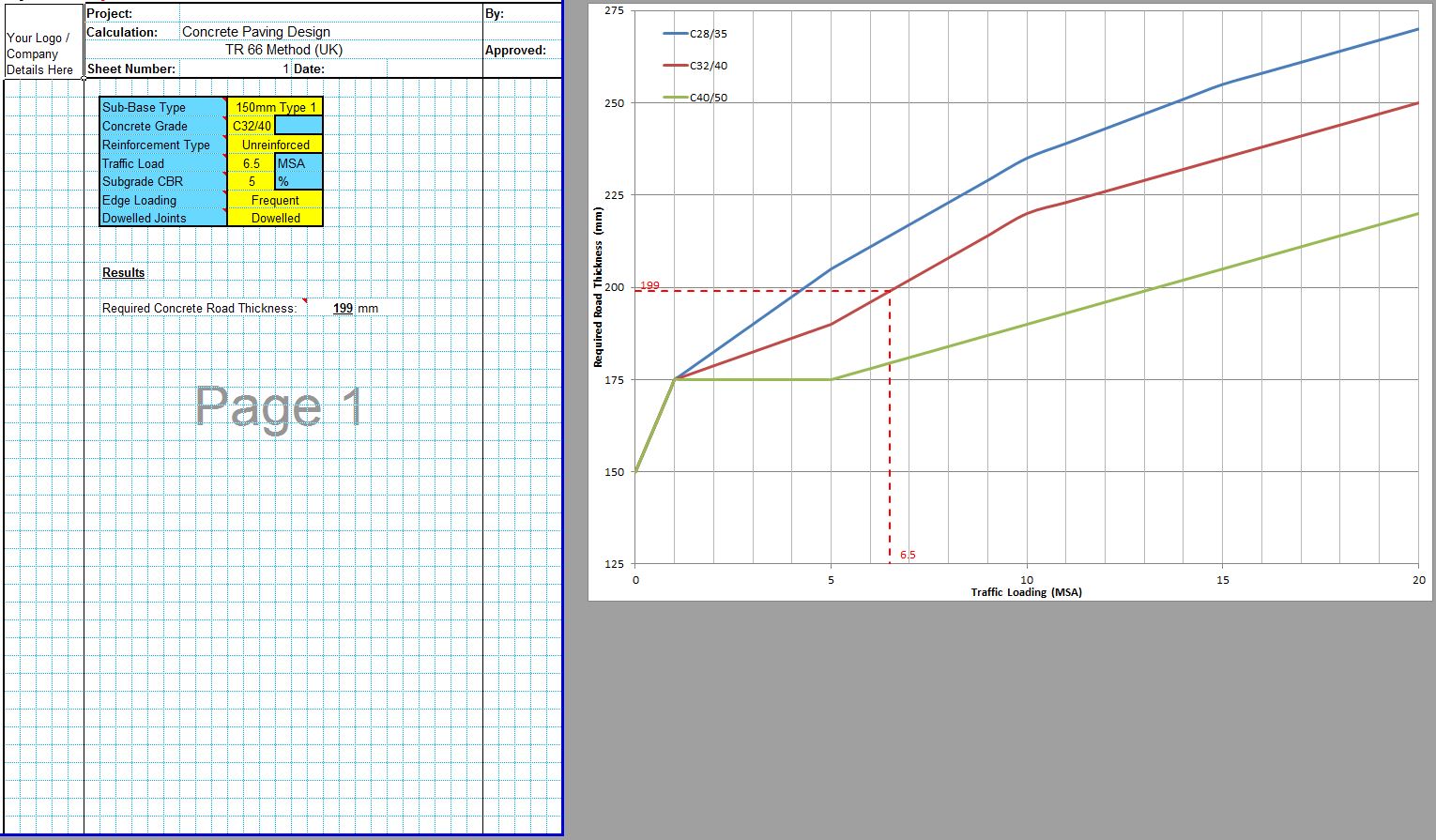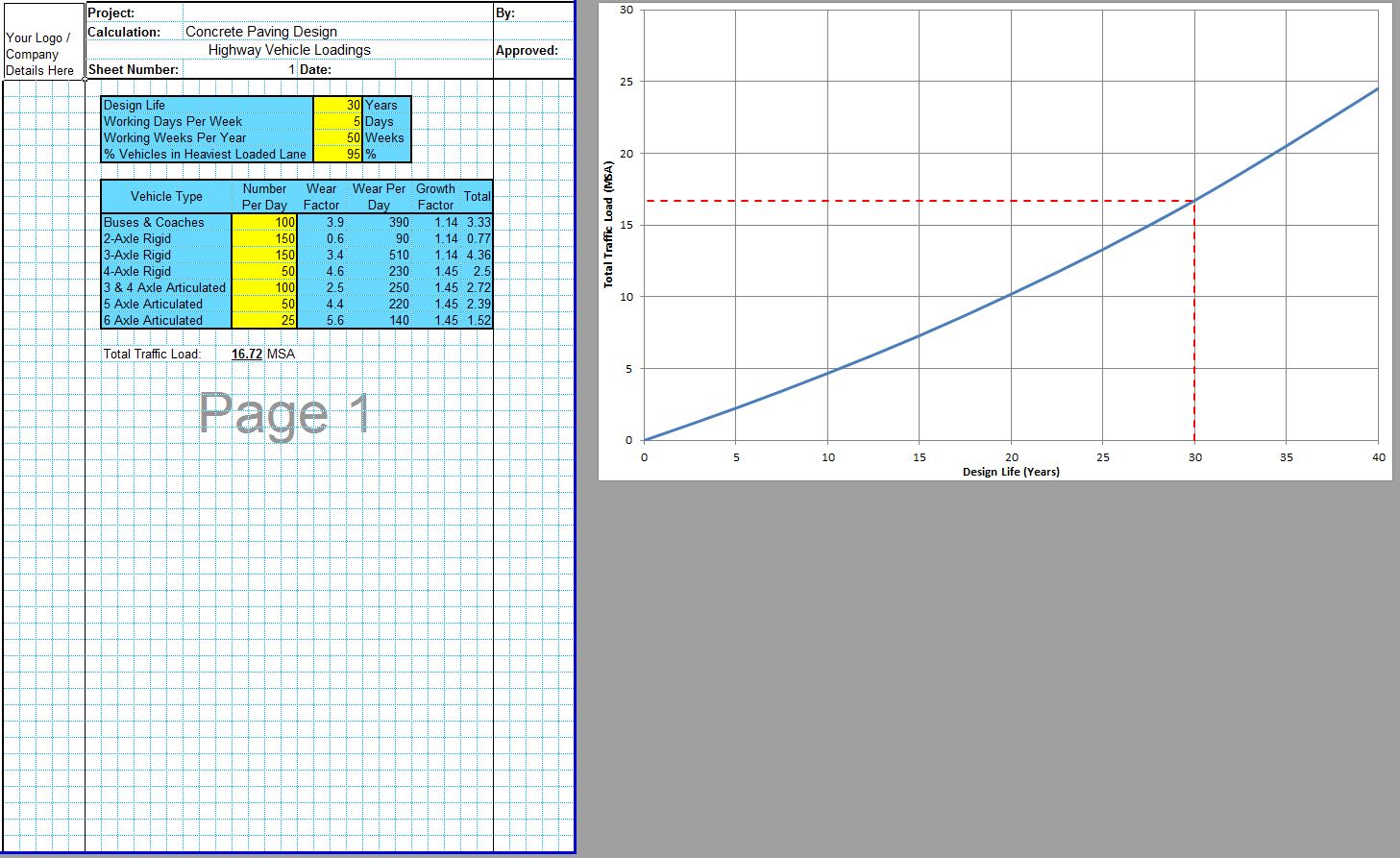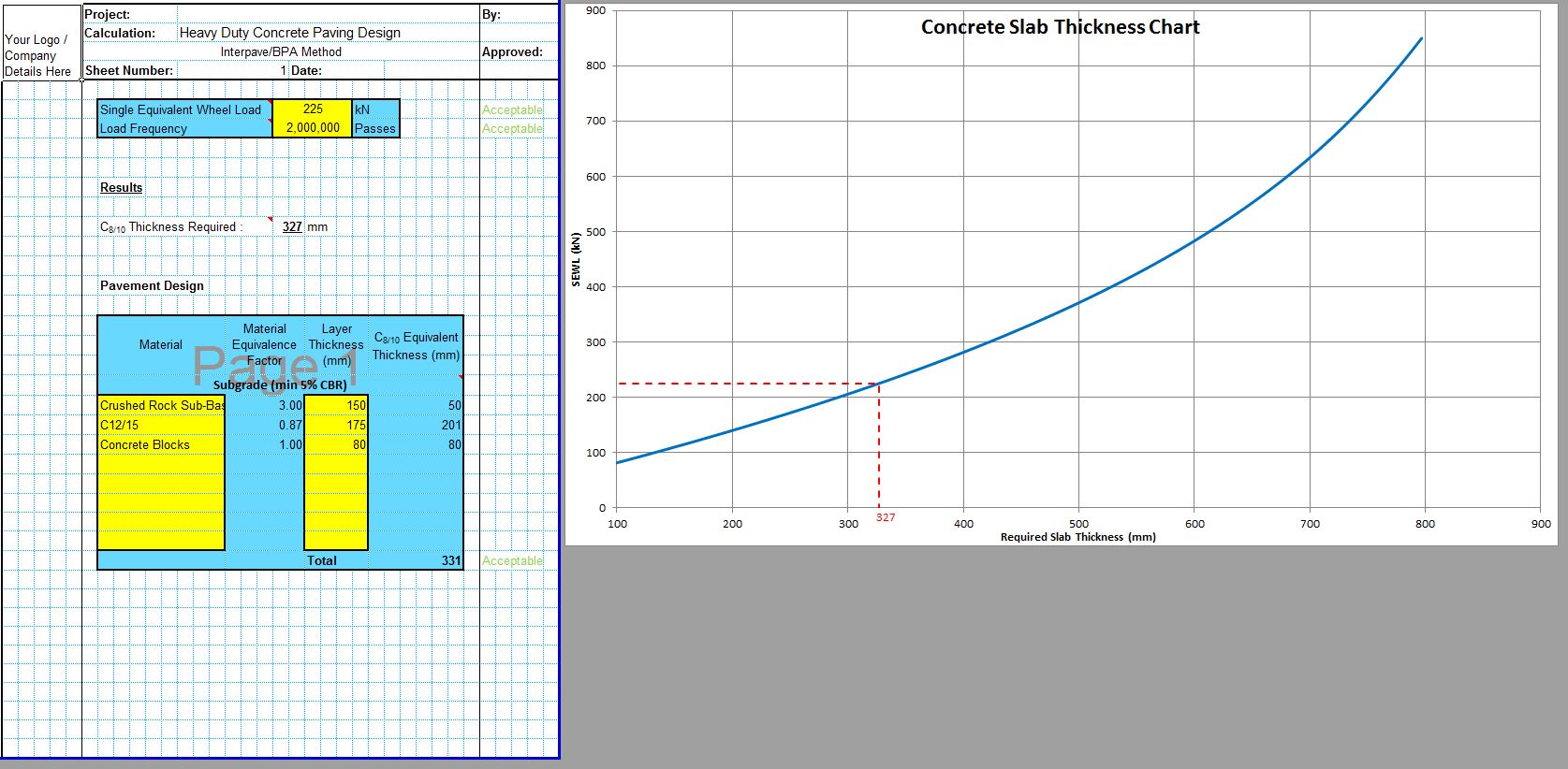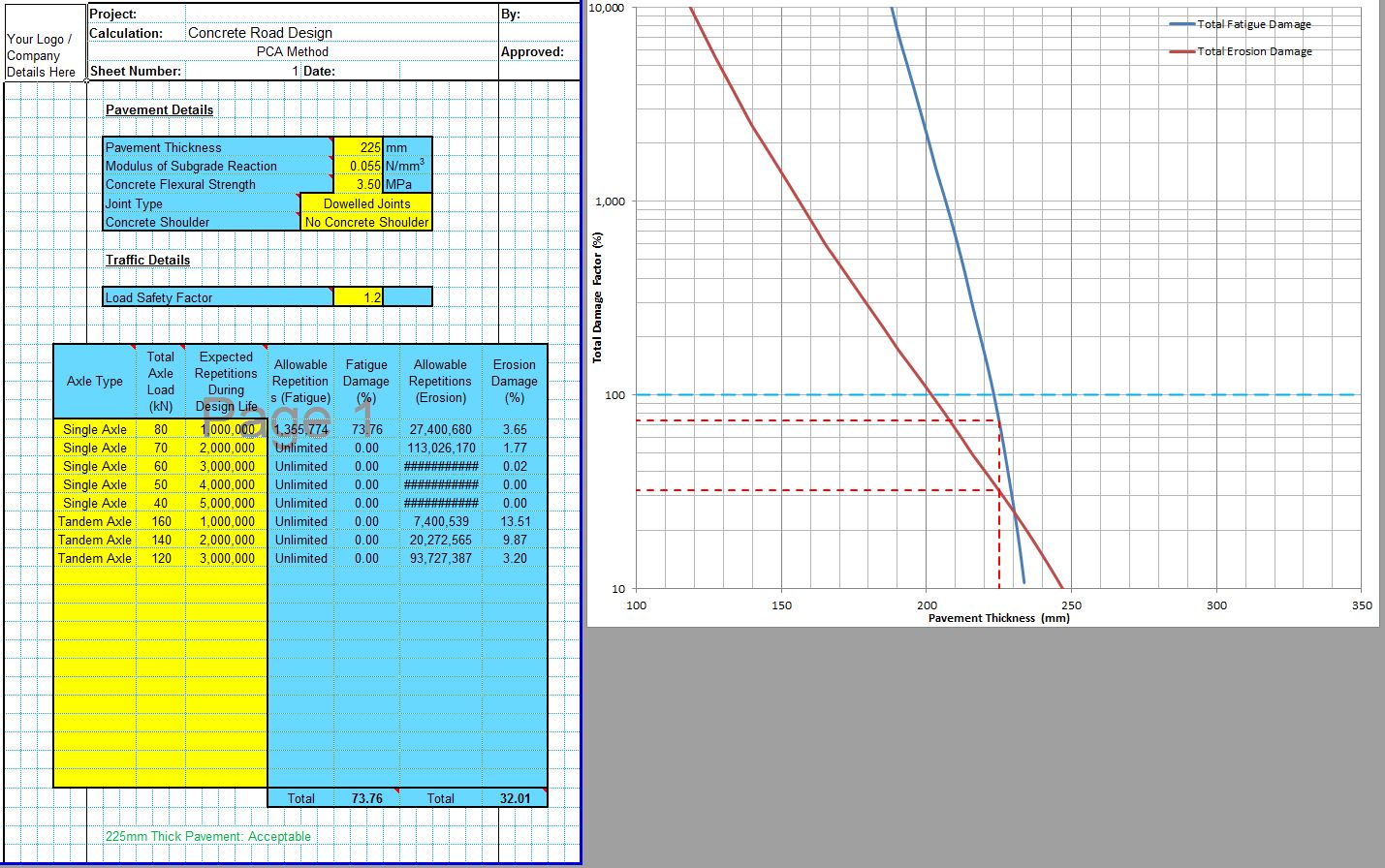Many concrete pavement design methods use a simplified way of dealing with multiple wheel loads called an equivalent single wheel load. This is needed when heavy duty pavements are designed which will take higher loadings than standard highway loads. This method simplifies the effects of multiple wheel loads in close proximity into an equivalent single wheel load for analysis.
The equivalent single wheel load simplification can be used in a Westergaard analysis and is included in the BPA heavy duty pavement design guide. Note that in the BPA heavy duty pavement design method the equivalent single wheel load is known as a single equivalent wheel load or SEWL.
The CivilWeb Equivalent Single Wheel Load Calculation Spreadsheet calculates the equivalent single wheel load for 7 common heavy duty vehicles including front lift trucks and tractor/trailer units. This spreadsheet is available for purchase at the bottom of this page for only £5. Alternatively the Equivalent Single Wheel Load Calculation Spreadsheet is included in the Westergaard and Heavy Duty Concrete Pavement Design suites, and in the full CivilWeb Rigid Pavement Design Suite.
Equivalent Single Wheel Load Definition
The design charts included in the BPA heavy duty concrete pavement design guide are based on a simplified model of wheel loading called an equivalent single wheel load. This assumes that the wheel loads from large plant can be simplified into an equivalent single wheel load including the influence from any nearby wheel loads and including multipliers for dynamic loading factors such as braking and accelerating.
UK highway vehicles are limited to a maximum axle load of 115kN. the design guide advises that some vehicles are likely to be overloaded and when dynamic factors are included a more suitable maximum axle load of 140kN is considered prudent for highway vehicles. Therefore highway vehicles can be modelled using the equivalent single wheel load of around 70kN.
Greater detail is included in the BPA design guide for shipping containers, a legacy of the guide’s origin as a British Ports Association publication. The BPA guide shows a typical distribution of shipping container weights which can be used to determine the critical wheel load which is the wheel load which load and frequency combine to create the maximum damage.
The effects of dynamic loading are included in the BPA design guide by multiplying the wheel load by a loading factor. These dynamic loading factors for various heavy vehicles is shown in the below table. These dynamic loading factors can be combined where two or more of these conditions occur, such as where plant is braking over uneven ground.
The BPA design guide includes a method for determining load proximity factors in cases where two or more large wheel loads are placed close together. A simplified table is included based on the effective depth of the slab which is the depth of an equivalent layer of the foundation material. This can be determined from the CBR value of the subgrade using the below equation. The approximate proximity factor can then be taken from the below table based on the effective slab depth and the distance between the two loads. This can be done multiple times for multiple wheel loads within close proximity to the wheel being considered.
Equivalent Single Wheel Load Calculation
The BPA design guide includes a number of approximate equations to estimate the equivalent single wheel loads for typical heavy vehicles found at ports and heavy industrial facilities. The CivilWeb Equivalent Single Wheel Load Calculation Spreadsheet includes tools to calculate the equivalent single wheel loads for these vehicle types and calculates the proximity values for the other wheels to give a load and a repetition value which can be used to model each pass of the vehicle. These values can then be used with the BPA design chart to design the pavement.
Equivalent Single Wheel Load Calculation - Front Lift Trucks and Reach Stackers
The equivalent single wheel load calculation for front lift trucks can be estimated using the below equations;
Equivalent Single Wheel Load Calculation - Straddle Carriers
The equivalent single wheel load calculation for straddle carriers can be estimated using the below equations;
Equivalent Single Wheel Load Calculation - Side Lift Trucks
The equivalent single wheel load calculation for side lift trucks can be estimated using the below equations;
Equivalent Single Wheel Load Calculation - Rubber Tyred Gantry Cranes
The equivalent single wheel load calculation for rubber tyred gantry cranes (RTGs) can be estimated using the below equations;
Equivalent Single Wheel Load Calculation - Tractor & Trailer Units
The equivalent single wheel load calculation for tractor and trailer units can be estimated using the below equations;
CivilWeb Equivalent Single Wheel Load Calculation Spreadsheet
Once the equivalent single wheel load and the number of load repetitions is known, the required pavement thickness can now be determined using the BPA heavy duty concrete pavement method. Alternative methods of analysis including Westergaard analysis methods also use an equivalent single wheel load as the basis of their calculations.
The CivilWeb Equivalent Single Wheel Load Calculation Spreadsheet can complete the calculations for the following vehicles;
- Front Lift Trucks
- Reach Stackers
- Tractor and Trailer Units
- Rubber Tyred Gantry Cranes (RTGs)
- Side Lift Trucks
- Straddle Carriers
- Shipping Container Stacks
Buy our Equivalent Single Wheel Load Calculation Spreadsheet now for only £5
Or why not buy our full Rigid Pavement Design suite for only £20
Or buy our best value bundle, the full Pavement Design Suite including flexible and rigid pavement spreadsheets for only £30
Download Free Trial Version
To try out a fully functional free trail version of this software, please enter your email address below to sign up to our newsletter.


